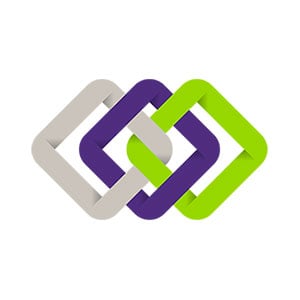-
Financial reporting and accounting advisory services
You trust your external auditor to deliver not only a high-quality, independent audit of your financial statements but to provide a range of support, including assessing material risks, evaluating internal controls and raising awareness around new and amended accounting standards.
-
Accounting Standards for Private Enterprises
Get the clear financial picture you need with the accounting standards team at Grant Thornton LLP. Our experts have extensive experience with private enterprises of all sizes in all industries, an in-depth knowledge of today’s accounting standards, and are directly involved in the standard-setting process.
-
International Financial Reporting Standards
Whether you are already using IFRS or considering a transition to this global framework, Grant Thornton LLP’s accounting standards team is here to help.
-
Accounting Standards for Not-for-Profit Organizations
From small, community organizations to large, national charities, you can count on Grant Thornton LLP’s accounting standards team for in-depth knowledge and trusted advice.
-
Public Sector Accounting Standards
Working for a public-sector organization comes with a unique set of requirements for accounting and financial reporting. Grant Thornton LLP’s accounting standards team has the practical, public-sector experience and in-depth knowledge you need.
-
Tax planning and compliance
Whether you are a private or public organization, your goal is to manage the critical aspects of tax compliance, and achieve the most effective results. At Grant Thornton, we focus on delivering relevant advice, and providing an integrated planning approach to help you fulfill compliance obligations.
-
Research and development and government incentives
Are you developing innovative processes or products, undertaking experimentation or solving technological problems? If so, you may qualify to claim SR&ED tax credits. This Canadian federal government initiative is designed to encourage and support innovation in Canada. Our R&D professionals are a highly-trained, diverse team of practitioners that are engineers, scientists and specialized accountants.
-
Indirect tax
Keeping track of changes and developments in GST/HST, Quebec sales tax and other provincial sales taxes across Canada, can be a full-time job. The consequences for failing to adequately manage your organization’s sales tax obligations can be significant - from assessments, to forgone recoveries and cash flow implications, to customer or reputational risk.
-
US corporate tax
The United States has a very complex and regulated tax environment, that may undergo significant changes. Cross-border tax issues could become even more challenging for Canadian businesses looking for growth and prosperity in the biggest economy in the world.
-
Cross-border personal tax
In an increasingly flexible world, moving across the border may be more viable for Canadians and Americans; however, relocating may also have complex tax implications.
-
International tax
While there is great opportunity for businesses looking to expand globally, organizations are under increasing tax scrutiny. Regardless of your company’s size and level of international involvement—whether you’re working abroad, investing, buying and selling, borrowing or manufacturing—doing business beyond Canada’s borders comes with its fair share of tax risks.
-
Transfer pricing
Transfer pricing is a complex area of corporate taxation that is concerned with the intra-group pricing of goods, services, intangibles, and financial instruments. Transfer pricing has become a critical governance issue for companies, tax authorities and policy makers, and represents a principal risk area for multinationals.
-
Succession & estate planning
Like many private business owners today, you’ve spent your career building and running your business successfully. Now you’re faced with deciding on a successor—a successor who may or may not want your direct involvement and share your vision.
-
Tax Reporting & Advisory
The financial and tax reporting obligations of public markets and global tax authorities take significant resources and investment to manage. This requires calculating global tax provision estimates under US GAAP, IFRS, and other frameworks, and reconciling this reporting with tax compliance obligations.

-
Transactions
Our transactions group takes a client-centric, integrated approach, focused on helping you make and implement the best financial strategies. We offer meaningful, actionable and holistic advice to allow you to create value, manage risks and seize opportunities. It’s what we do best: help great organizations like yours grow and thrive.
-
Restructuring
We bring a wide range of services to both individuals and businesses – including shareholders, executives, directors, lenders, creditors and other advisors who are dealing with a corporation experiencing financial challenges.
-
Forensics
Market-driven expertise in investigation, dispute resolution and digital forensics
-
Consulting
Running a business is challenging and you need advice you can rely on at anytime you need it. Our team dives deep into your issues, looking holistically at your organization to understand your people, processes, and systems needs at the root of your pain points. The intersection of these three things is critical to develop the solutions you need today.
-
Creditor updates
Updates for creditors, limited partners, investors and shareholders.

-
Governance, risk and compliance
Effective, risk management—including governance and regulatory compliance—can lead to tangible, long-term business improvements. And be a source of significant competitive advantage.
-
Internal audit
Organizations thrive when they are constantly innovating, improving or creating new services and products and envisioning new markets and growth opportunities.
-
Certification – SOX
The corporate governance landscape is challenging at the best of times for public companies and their subsidiaries in Canada, the United States and around the world.
-
Third party assurance
Naturally, clients and stakeholders want reassurance that there are appropriate controls and safeguards over the data and processes being used to service their business. It’s critical.
-
 ASPE Sec. 3041 Agriculture Understanding and applying the new ASPE Section 3041 AgricultureThe Canadian Accounting Standards Board (AcSB) has released new guidance on recognizing, measuring and disclosing biological assets and the harvested products of bio assets.
ASPE Sec. 3041 Agriculture Understanding and applying the new ASPE Section 3041 AgricultureThe Canadian Accounting Standards Board (AcSB) has released new guidance on recognizing, measuring and disclosing biological assets and the harvested products of bio assets. -
 Tax alert Agricultural Clean Technology ProgramThe Agricultural Clean Technology Program will provide financial assistance to farmers and agri-businesses to help them reduce greenhouse gas (GHG) emissions.
Tax alert Agricultural Clean Technology ProgramThe Agricultural Clean Technology Program will provide financial assistance to farmers and agri-businesses to help them reduce greenhouse gas (GHG) emissions. -
 Tax alert ACT Program – Research and Innovation Stream explainedThe ACT Research and Innovation Stream provides financial support to organizations engaged in pre-market innovation.
Tax alert ACT Program – Research and Innovation Stream explainedThe ACT Research and Innovation Stream provides financial support to organizations engaged in pre-market innovation. -
 Tax alert ACT Program – Adoption Stream explainedThe ACT Adoption Stream provides non-repayable funding to help farmers and agri-business with the purchase and installation of clean technologies.
Tax alert ACT Program – Adoption Stream explainedThe ACT Adoption Stream provides non-repayable funding to help farmers and agri-business with the purchase and installation of clean technologies.
-
Builders And Developers
Every real estate project starts with a vision. We help builders and developers solidify that vision, transform it into reality, and create value.
-
Rental Property Owners And Occupiers
In today’s economic climate, it’s more important than ever to have a strong advisory partner on your side.
-
Real Estate Service Providers
Your company plays a key role in the success of landlords, investors and owners, but who is doing the same for you?

-
Mining
There’s no business quite like mining. It’s volatile, risky and complex – but the potential pay-off is huge. You’re not afraid of a challenge: the key is finding the right balance between risk and reward. Whether you’re a junior prospector, a senior producer, or somewhere in between, we’ll work with you to explore, discover and extract value at every stage of the mining process.
-
Oil & gas
The oil and gas industry is facing many complex challenges, beyond the price of oil. These include environmental issues, access to markets, growing competition from alternative energy sources and international markets, and a rapidly changing regulatory landscape, to name but a few.

If you want to strengthen your business' cybersecurity—you're not alone. Organizations across Canada have been stepping up their security measures to help prevent cyberattacks.
We answer some of the most frequently asked questions—from password protection to insurance—to demystify cybersecurity and help safeguard your organization.
1. How can a cyberattack be prevented?
Many businesses don’t think about cybersecurity threats until it’s too late. The good news is that cyberattacks are preventable with a proactive plan and effective cybersecurity policies. Prevention can include the following strategies:
- Build a human firewall. Your best defence is your people. Cybersecurity awareness training and regular testing can enable your team to identify potential attacks and protect your systems against various threats—from social engineering schemes to phishing, vishing, and smishing.
- Conduct annual cybersecurity assessments. Cybercriminals are increasingly sophisticated and regularly update their tactics. Regular evaluation of your security practices is critical to combatting potential cyberattacks.
- Establish cybersecurity best practices. These can include password policies, system patching policies, and acceptable use.
2. What is the difference between IT and cybersecurity teams? Does my business need both?
IT and cybersecurity teams offer optimal protection when working in tandem. IT teams create policies and procedures to ensure that networks are operational while protecting the availability of digital information and physical devices. Cybersecurity teams are typically outsourced—they can conduct awareness training, assessments, and vulnerability scans, and focus on the confidentiality and integrity of data and systems from internal and external threats.
3. What should my business consider when developing a cybersecurity strategy?
People, processes, and technology are the three pillars of a comprehensive cybersecurity strategy. We recommend examining your organization’s governance structure, identifying your most valuable assets, auditing your employees’ cybersecurity skillsets, and assessing your organization’s critical threats.
4. How can cybersecurity insurance protect my business?
Cybersecurity insurance won’t stop a cyberattack from occurring, but it can limit your financial exposure. Policies generally cover costs associated with a forensic investigation, extortion from a ransomware attack, or a lawsuit. Policies don’t typically include future lost profits, decreased value due to reputational damage, or costs associated with preventative upgrades to IT systems.
Cybersecurity insurance is only one component of your risk management program. It’s just as important (if not more so) to have other appropriate controls to prevent and detect cyberattacks.
5. Is it risky to grant employees full administrative access on their company computers?
Granting employees full administrative access to company computers is a high-risk practice since they can install new software, add accounts, and alter systems. If an employee clicks on a phishing email containing a malicious attachment, the associated malware can do more damage to the user’s computer given their elevated permissions.
That said, denying administrative access doesn’t eliminate cybersecurity risks—employees can still unknowingly click on a malicious link and input their credentials.
6. How can I ensure my password is secure?
A computer can guess 100 billion passwords1 every second. A strong password should consist of at least ten characters with a mix of upper- and lower-case letters, special characters, and numbers, and should be changed every 90 days. It shouldn’t contain personally identifiable information, such as a name or date of birth. The same password should not be used for more than one system.
Password managers use strong encryption to protect passwords, making them secure and safe. You should also use multi-factor authentication for an extra layer of security, which will require a second authentication before allowing access to stored passwords. Learn more about strengthening your passwords here.
7. Is my business vulnerable to cybersecurity threats?
We recommend starting with a cybersecurity assessment to review vulnerabilities, awareness, and preparedness. The assessment is customized to your size and industry and aligns with the most recent Canadian and international cybersecurity standards.
Visit our cybersecurity hub
Developing a cybersecurity program is critical in our digital era—but you aren’t alone. If you have a cyber-related question or want to learn more about how we can support you, visit our cybersecurity hub.
[1] Paul Haskell-Dowland, P. (2021, February 1). A computer can guess more than 100,000,000,000 passwords per second. Still think yours is secure? The Conversation. https://theconversation.com/a-computer-can-guess-more-than-100-000-000-000-passwords-per-second-still-think-yours-is-secure-144418.
Disclaimer
The information and comments herein are for the general information of the reader and are not intended as advice or opinion to be relied upon in relation to any particular circumstances. For particular application, the reader should seek professional advice.
Get the latest insights in your inbox.
Subscribe to receive relevant and timely insights and event invitations.

